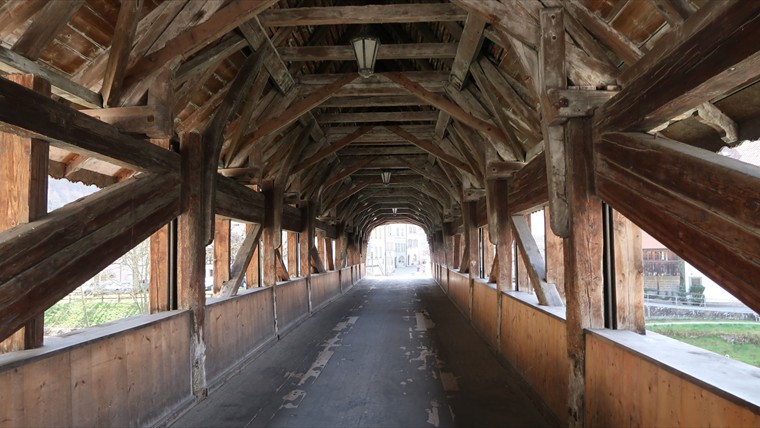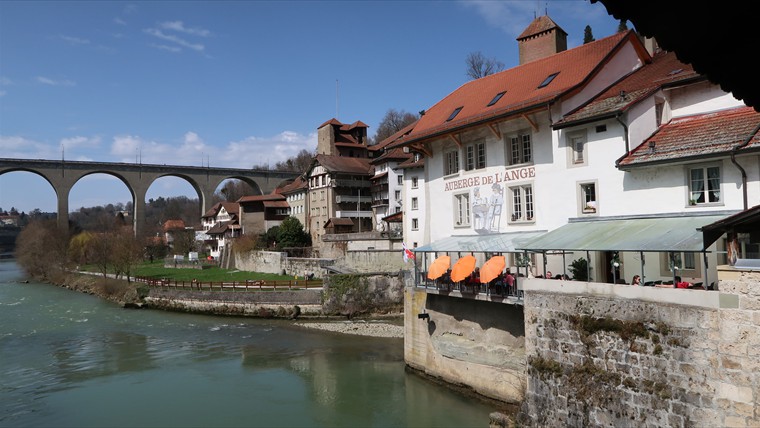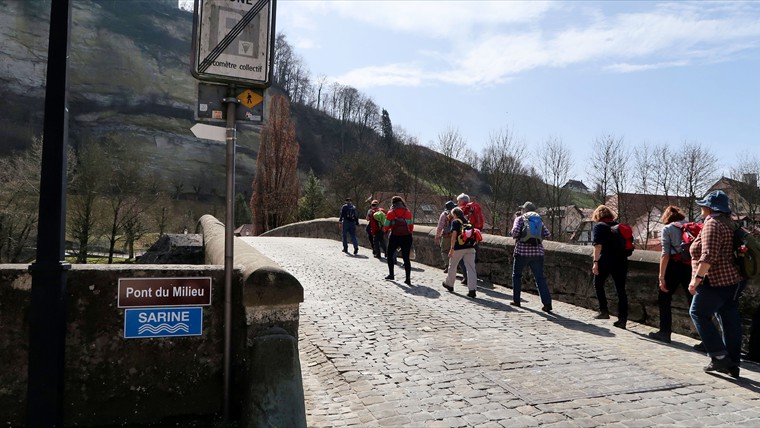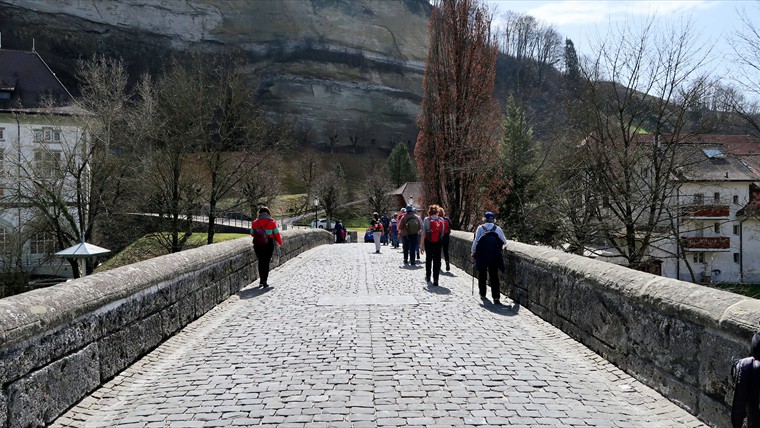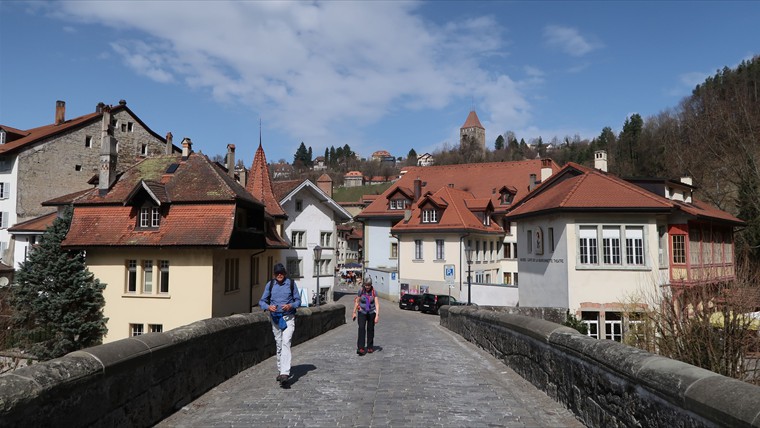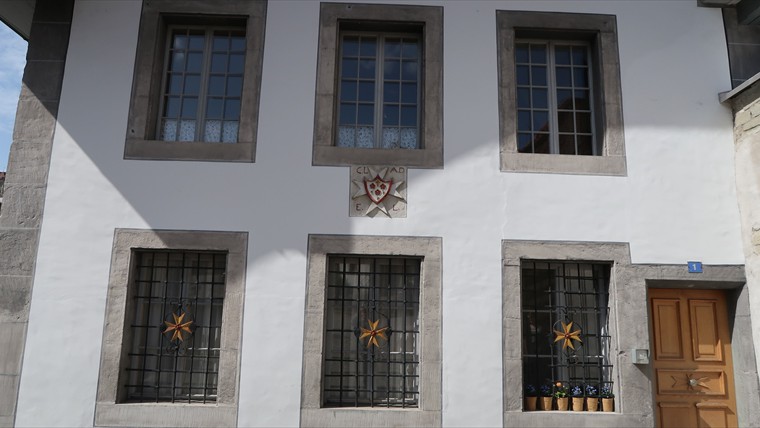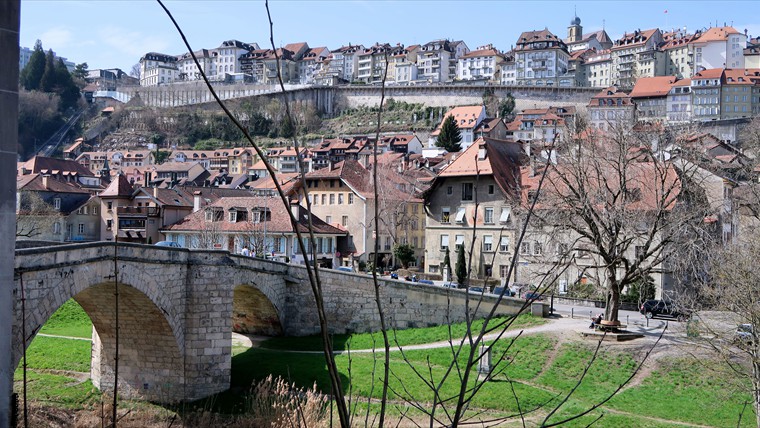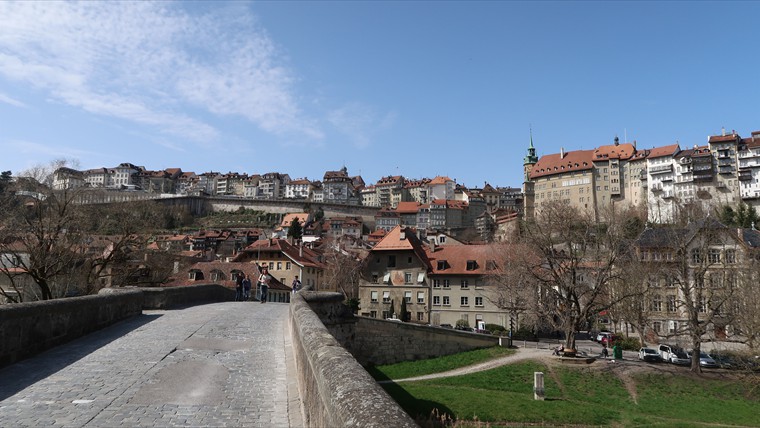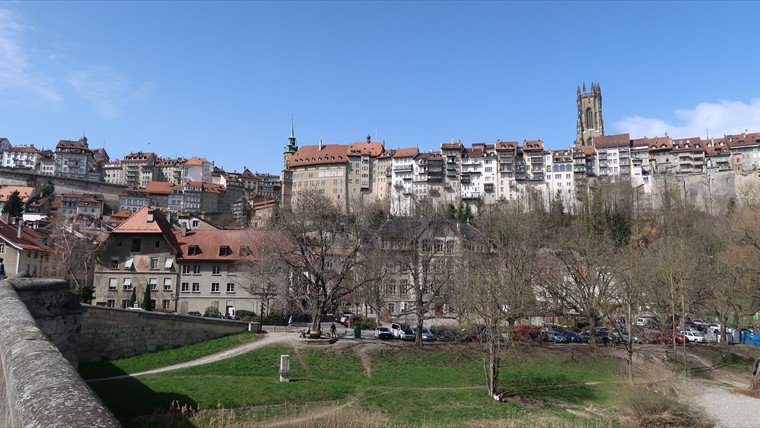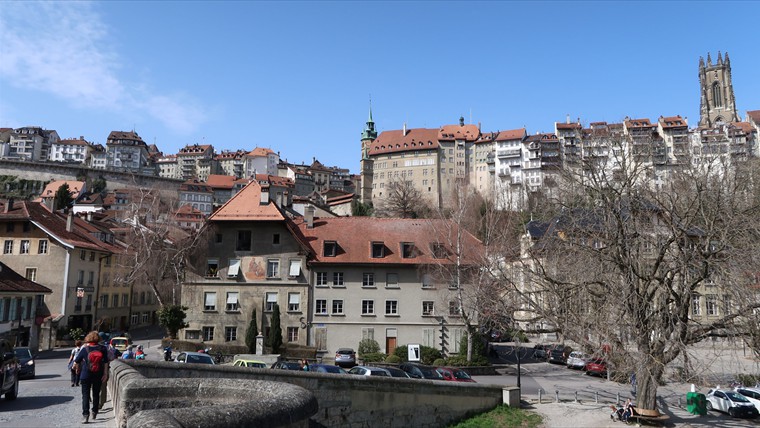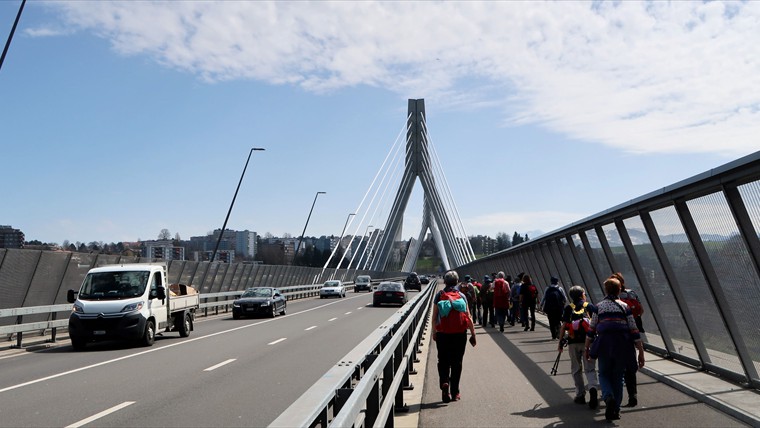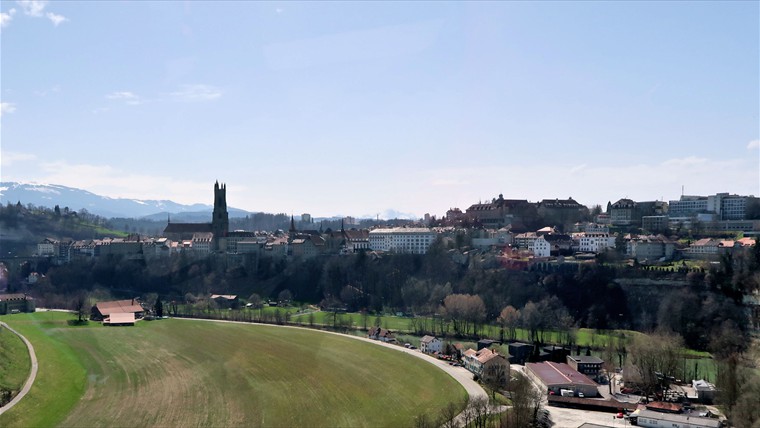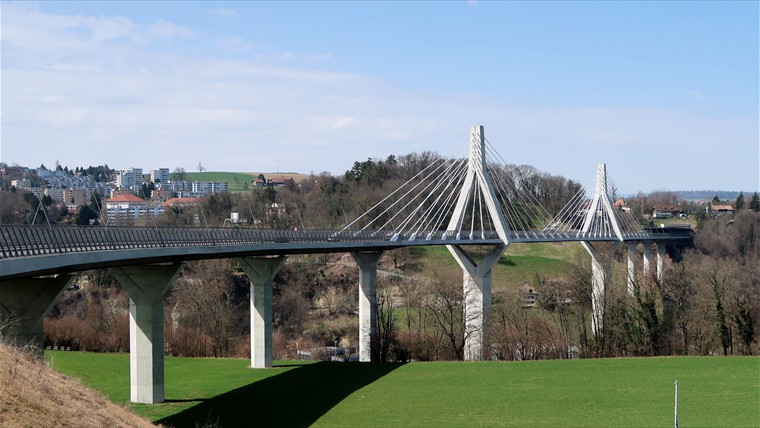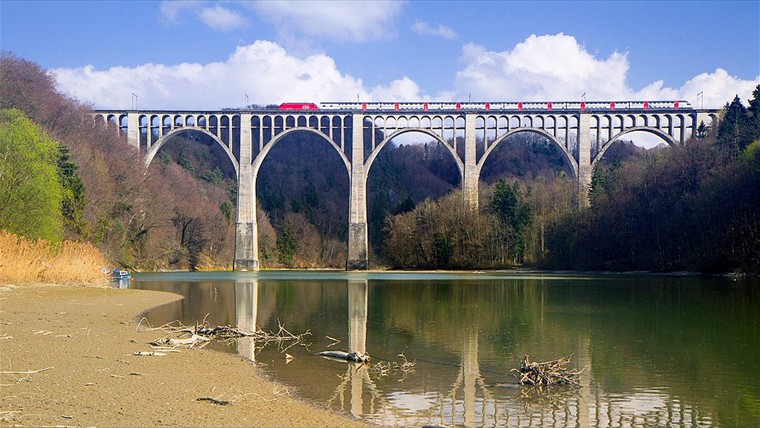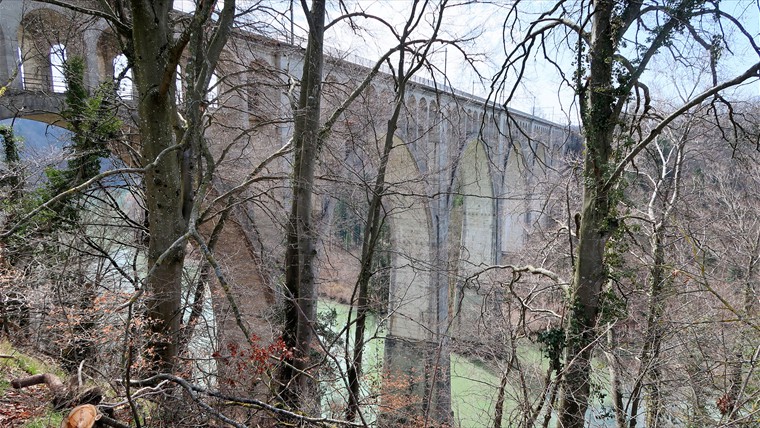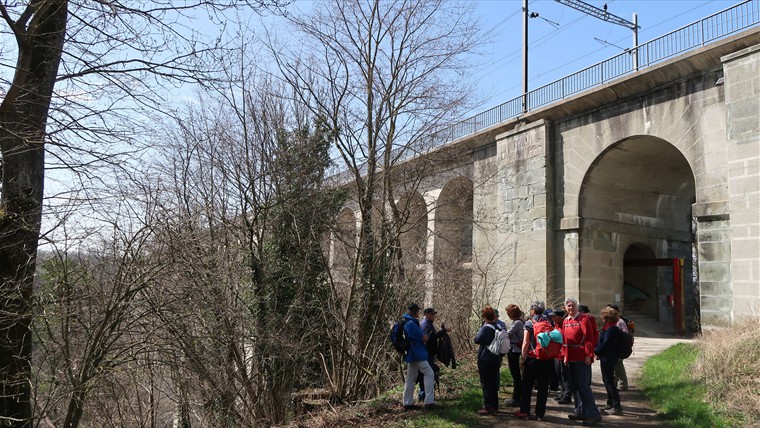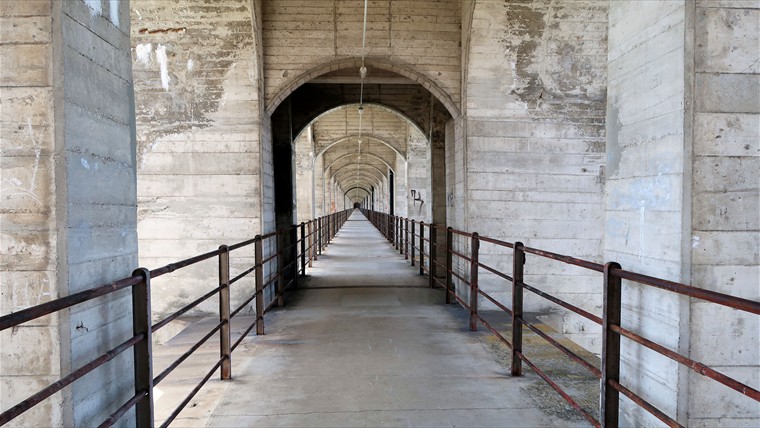The city of Freiburg was founded around 1157 on a rock spur in a bend in the Saane. There, the river has created a natural wall of almost 60 metres high on one side in the molasse rock. On the right bank, the height of Schönenberg drops down to the Berntor. Opposite, much more abruptly, the Stalden ramp leads to the historic heart of the town. The construction of a bridge was urgently needed in the middle of the 13th century in order to integrate a newly created quarter on the right bank of the Saane into the city.
The Bern bridge
The Bern bridge is the first construction over the course of the Saane between the Gruyère region and its confluence with the Aare near Laupen. It probably already existed in 1275 and was made entirely of wood at the time. The construction principle originated with the Celts and was adopted by the Romans. The distance between the pillars was about eight metres. The bridge was protected by barriers and was covered. As the city's calculations show, it was often damaged during floods and was even destroyed in 1402. Therefore the wooden pillars were replaced by four brick ones around 1526. In 1653 a single pillar replaced its predecessors. The roadway remained wooden, but now had to span about 20 metres. In the course of the last decades the construction was reinforced by metal parts.
The Middle Bridge and the Saint John Bridge
In 1259, the Maltese, who emerged from the Johanniter, received a piece of land in Freiburg to be able to provide help for the sick and travellers. The order established a commandery and built a hospice and a cemetery. The place was separated from the city by the river and the rocks. It was also at this time that the Maigrauge Abbey, a Cistercian convent, and a hospital in Bürglen (Bourguillon) were built. The construction of another bridge into the town was necessary. It has been attested since 1279 and was called the Middle Bridge after the construction of the Saint John Bridge (attested in 1353). The structure was continuously damaged and required expensive maintenance. Therefore, in the 18th century, it was replaced by a tuff construction. Despite increasing traffic, the bridges have not been widened, much to the chagrin of pedestrians, so as not to detract from the characteristic silhouette in the old quarters.
Pictures of the Middle Bridge (Pont du Milieu)
Pictures of the Commandery and the Sankt John Bridge
The Great Suspension Bridge and its successor
At the beginning of the 19th century, the Saane had lost its importance as a defensive position and the people of Freiburg demanded an easier transition. New iron bridges were built. Joseph Chaley, a former officer wounded at Waterloo, met Marc Seguin, inventor and designer. He came to Freiburg in 1830 and agreed to build the bridge for 300,000 francs. He was also granted the right to levy a bridge toll for 40 years. Should the bridge cost more than the agreed amount, this would be at his expense. The Great Suspension Bridge consisted of a wooden deck reinforced by a parapet, which was suspended from four wire ropes. The cables were anchored in the rock. The portals were built by Seguin from Fribourg Molasse in a monumental Doric style. At that time, the construction was the longest suspension bridge in the world with a span of 265 m, attracting visitors from all countries. In 1924 the suspension bridge had to be replaced by a concrete structure and is now called the Zähringer Bridge. Its dubious aesthetics destroyed the elegance of the Belle Epoque.
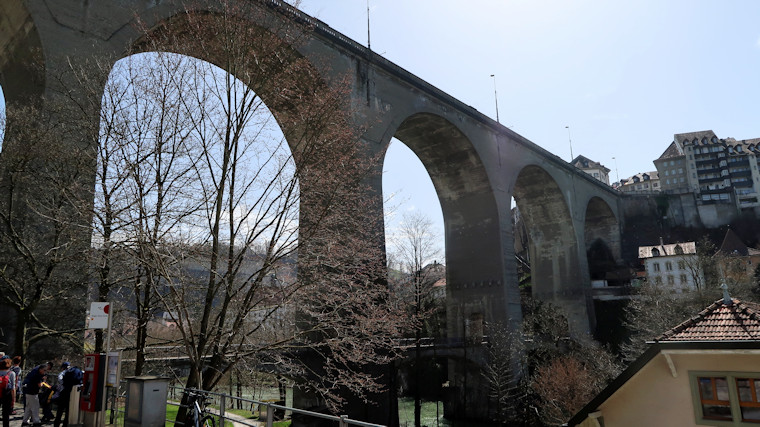
The new Poya bridge
After the pilgrim has passed an oversized roundabout that surrounds St. Bartholomew's Chapel like an octopus, the pillars of the Poya Bridge gradually come into his field of vision. This structure, named after La Poya Castle at the western end of the bridge, was opened in 2014 and allows motorised traffic to bypass the old town around St. Nicholas Cathedral. The historic buildings there have long suffered from air pollution. The Poya Bridge is a cable-stayed bridge with a 196 m span, a Swiss record. The bridge is also accessible to pedestrians and offers a magnificent view both towards the old town and the surrounding area. If the pilgrim chooses this route, he will come directly to the shady promenade and the Murtentor, an entrance to the old town.
The Grandfey Viaduct
Between 1830 and 1860 the railway gradually replaced the stagecoaches. The line from Berne to Fribourg was also started. A gigantic bridge was needed to cross the deep ditch of the Saane. In the past, bridges were built on the basis of experience, but now they have been recalculated exactly. The British engineers excelled as locomotive designers. Their colleagues at the French Ecole des ponts et chaussées, on the other hand, were pioneers in the construction of bridges and station concourses. The construction of the Grandfey Viaduct, with a total length of 383 m and six piers, was entrusted to a French company in 1857. 20,000 m3 of stone and over 3000 tons of iron were needed. This bridge also caused problems later. As it aged, the weight of the trains increased. In 1925 the six iron trussed columns, which were completely set in concrete, were given wide concrete arches. Like the suspension bridge, this work also set records. It remained the longest bridge in the Swiss railway network for a long time. The period of fame was also reflected in the creation of legends. For example, the construction was attributed to Gustave Eiffel, although his engineering skills were only brought to bear later (Eiffel Tower 1889). Near this passage is a modern sculpture by the American artist Richard Serra. The work of art represents an L-shaped steel beam and was created in 1987. It is dedicated on a plaque to Robert Maillard. He would have led the reconstruction. However, this is another mistake. The famous bridge builder was only marginally involved as an expert. The crossing is accessible to pedestrians. The pilgrim leaves the marked route No. 4 at the chapel of Uebewil, goes north to Kastels and through Balliswil, from where a beautiful avenue leads him to the bridge. A great panoramic view rewards the diversion.
Source: Ultreïa No 60. The author Pierre Zwick is an engineer and specialist in historical civil engineering.

